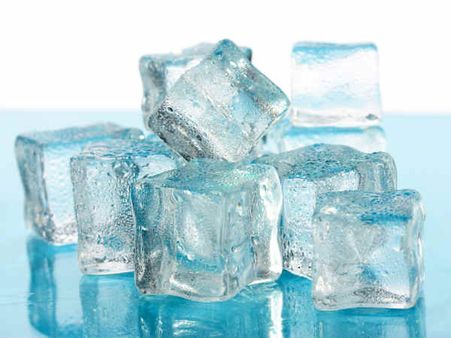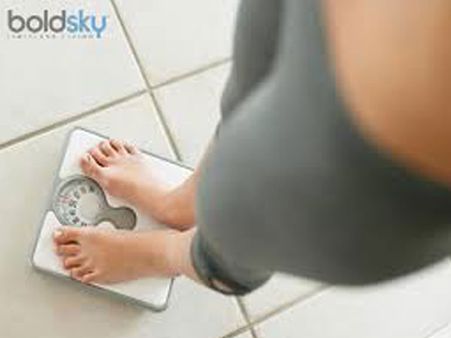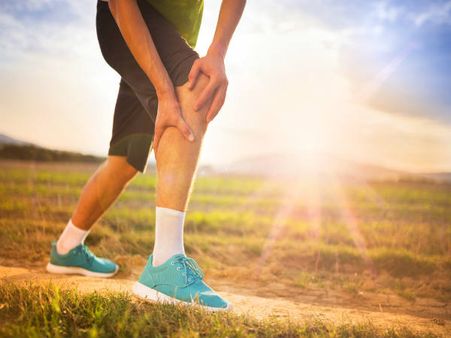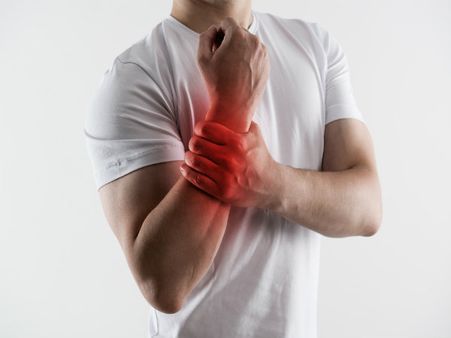Just In
- 1 hr ago

- 3 hrs ago

- 4 hrs ago

- 6 hrs ago

Don't Miss
- Sports
 DC vs SRH My11Circle Prediction IPL 2024 Match 35: DEL vs HYD Fantasy Tips & Expert Picks
DC vs SRH My11Circle Prediction IPL 2024 Match 35: DEL vs HYD Fantasy Tips & Expert Picks - Movies
 Love Sex Aur Dhokha 2 Box Office Collection Day 1: LSD 2 Gets A Poor Opening; Fails To Beat Vidya's Film
Love Sex Aur Dhokha 2 Box Office Collection Day 1: LSD 2 Gets A Poor Opening; Fails To Beat Vidya's Film - Technology
 Best Noise-Cancelling Earbuds Under Rs 5,000: CMF Buds Pro, Redmi Buds 5, Realme Buds Air 5, and More
Best Noise-Cancelling Earbuds Under Rs 5,000: CMF Buds Pro, Redmi Buds 5, Realme Buds Air 5, and More - Finance
 62-Yrs Old Fertilizers PSU Set To Recommend Dividend Rewards, Rises 78% In 1-Yr; Yield 4.49%
62-Yrs Old Fertilizers PSU Set To Recommend Dividend Rewards, Rises 78% In 1-Yr; Yield 4.49% - News
 Punjab Human Rights Panel Issues Notice To ADGP In Sangrur Jail Clash Case
Punjab Human Rights Panel Issues Notice To ADGP In Sangrur Jail Clash Case - Education
 UPMSP Class 10 and 12 Results 2024 Released Today, Check the Details Here
UPMSP Class 10 and 12 Results 2024 Released Today, Check the Details Here - Automobiles
 Tesla CEO Elon Musk's Much-Awaited Visit to India Deferred, Leaving Questions Unanswered
Tesla CEO Elon Musk's Much-Awaited Visit to India Deferred, Leaving Questions Unanswered - Travel
 Journey From Delhi To Ooty: Top Transport Options And Attractions
Journey From Delhi To Ooty: Top Transport Options And Attractions
World Arthritis Day 2019: Dos And Don'ts For Handling Knee Pain
Every year, October 12 is observed as World Arthritis Day to raise and promote awareness of the symptoms connected to rheumatic and musculoskeletal diseases and the importance of gaining an early diagnosis. This year, the theme of World Arthritis Day is 'Don't Delay Connect Today'. In this article, we will discuss the dos and don'ts for knee pain.

Arthritis is an inflammatory condition which causes pain and stiffness in the joints that worsens as you age [1] . Arthritis mostly affects the elderly who are above the age of 65. However, around 30 per cent of people suffering from arthritis is under the age of 65. The most common types of arthritis are osteoarthritis [2] , rheumatoid arthritis [3] , psoriatic arthritis [4] and gout [5] .
According to the Arthritis Foundation, about 31 Million people live with osteoarthritis pain, which frequently appears in the knee joints.
Have a look at these dos and don'ts for knee pain so that your knees can feel better.
What You Should Do For Knee Pain

1. Choose knee joint-friendly exercises
Choose low-impact exercises like walking, swimming and cycling. These exercises help to build strength around the affected knee joints, keep them aligned and help them to function properly. But, before starting with these low-impact exercises consult your doctor.
Most Read: 8 Foods To Avoid For Arthritis

2. Use RICE
Rest,
ice,
compression
and
elevation
(RICE)
is
good
for
knee
pain
caused
by
arthritis
or
other
minor
injuries.
This
method
is
a
simple
self-care
technique
that
helps
reduce
swelling,
pain
and
speeds
up
the
healing
process.
- The first step is to rest your knees which helps to prevent further bruising.
- The second step is applying an ice pack to reduce pain and swelling.
- The third step is compression, which means wrapping the injured area with an elastic medical bandage.
- The fourth step is elevation which means raising the affected knee above your body at the level of your heart. This will reduce throbbing pain and any internal bleeding.

3. Maintain a healthy weight
When your knees are already in pain, excess body weight pressure or stress on it can damage your knees. If you are obese and suffering from knee pain then you need to lose weight as it helps relieve knee pain and even slows down the rate of cartilage degeneration.

4. Wear knee-friendly shoes
If you are suffering from arthritis the choice of shoe matters. According to the study 'Improvement in knee loading after use of specialized footwear for knee osteoarthritis: results of a six-month pilot investigation', published in the journal Arthritis and Rheumatology, flat and flexible shoes which comfort the foot's natural mobility can decrease the pressure on the knees during daily activities.


5. Take medications as prescribed
Arthritis pain can be eased with over-the-counter or prescription-strength non-steroidal anti-inflammatory drugs. However, it's advised that you talk to your doctor before taking these medications.

What You Shouldn't Do For Knee Pain
1.
Don't
rest
too
much
Too much rest can weaken your muscles, which can worsen the pain in your joints. Small movement of the joints is required to make them flexible. You can do low-impact exercises such as walking, or cycling for movement in the joints.

2. Don't engage in high-impact exercises
High-impact exercises such as running, jumping, lunges, and squats can affect your already damaged knees. Because these type of exercises will injure your knees more, your muscles get hurt, you start losing strength and the knee alignment changes which can further lead to joint replacement surgery.

3. Don't be afraid to use assistive devices
Decrease knee osteoarthritis pain with the help of canes and knee braces. Sometimes, you might feel that your knee pain is becoming worse this is where the assistive devices come in handy. Ask a therapist which assistive device is best for you.
4. Don't ignore new symptoms of knee pain
If you feel that your knee pain is terrible which makes it difficult for you to sleep, it could mean that your arthritis is progressing. You will notice symptoms like swelling or a locked knee. It is important to discuss the new symptoms with your doctor and receive appropriate treatment.
Share this article to create awareness!
- [1] Senthelal S, Thomas MA. Arthritis. [Updated 2019 Aug 22]. In: StatPearls [Internet]. Treasure Island (FL): StatPearls Publishing; 2019 Jan-.
- [2] Hunter, D. J., & Felson, D. T. (2006). Osteoarthritis. BMJ (Clinical research ed.), 332(7542), 639–642. doi:10.1136/bmj.332.7542.639
- [3] Chauhan K, Al-Dhahir MA. Rheumatoid Arthritis. [Updated 2019 Aug 30]. In: StatPearls [Internet]. Treasure Island (FL): StatPearls Publishing; 2019 Jan-.
- [4] Sankowski, A. J., Lebkowska, U. M., Cwikła, J., Walecka, I., & Walecki, J. (2013). Psoriatic arthritis. Polish journal of radiology, 78(1), 7–17. doi:10.12659/PJR.883763
- [5] Ragab, G., Elshahaly, M., & Bardin, T. (2017). Gout: An old disease in new perspective - A review. Journal of advanced research, 8(5), 495–511. doi:10.1016/j.jare.2017.04.008
-
 healthCan Vitamin D Deficiency Cause Knee Pain? How To Know If You Are Vitamin D Deficient?
healthCan Vitamin D Deficiency Cause Knee Pain? How To Know If You Are Vitamin D Deficient? -
 diet fitnessPhysical Therapy For Knees: Ways To Deal With Your Knee Pain
diet fitnessPhysical Therapy For Knees: Ways To Deal With Your Knee Pain -
 wellness10 Quick Home Remedies To Reduce Knee Pain
wellness10 Quick Home Remedies To Reduce Knee Pain -
 wellnessHow to Cure Knee Pain Naturally? Here Are 8 Ways to Do So
wellnessHow to Cure Knee Pain Naturally? Here Are 8 Ways to Do So -
 wellnessCan Knee Pain Lead To Depression?
wellnessCan Knee Pain Lead To Depression? -
 wellnessThis Is How You Must Use Lemon To Get Rid Of Knee Pain At Home
wellnessThis Is How You Must Use Lemon To Get Rid Of Knee Pain At Home -
 disorders cure18 Home Remedies For Knee Pain Relief
disorders cure18 Home Remedies For Knee Pain Relief -
 wellnessWrap Your Leg With Cabbage For 1 Hour & See What Happens!
wellnessWrap Your Leg With Cabbage For 1 Hour & See What Happens! -
 disorders cureWhat Salt & Olive Oil Can Do To Your Neck & Knee Pain; Find Out Here
disorders cureWhat Salt & Olive Oil Can Do To Your Neck & Knee Pain; Find Out Here -
 disorders cureHome Remedies For Knee Pain In Older People
disorders cureHome Remedies For Knee Pain In Older People -
 disorders cureTake Up These 10 Home Remedies & Say Goodbye To Knee Pain!
disorders cureTake Up These 10 Home Remedies & Say Goodbye To Knee Pain! -
 wellness4 Ways You Are Harming Your Joints Without Realizing!
wellness4 Ways You Are Harming Your Joints Without Realizing!


 Click it and Unblock the Notifications
Click it and Unblock the Notifications



